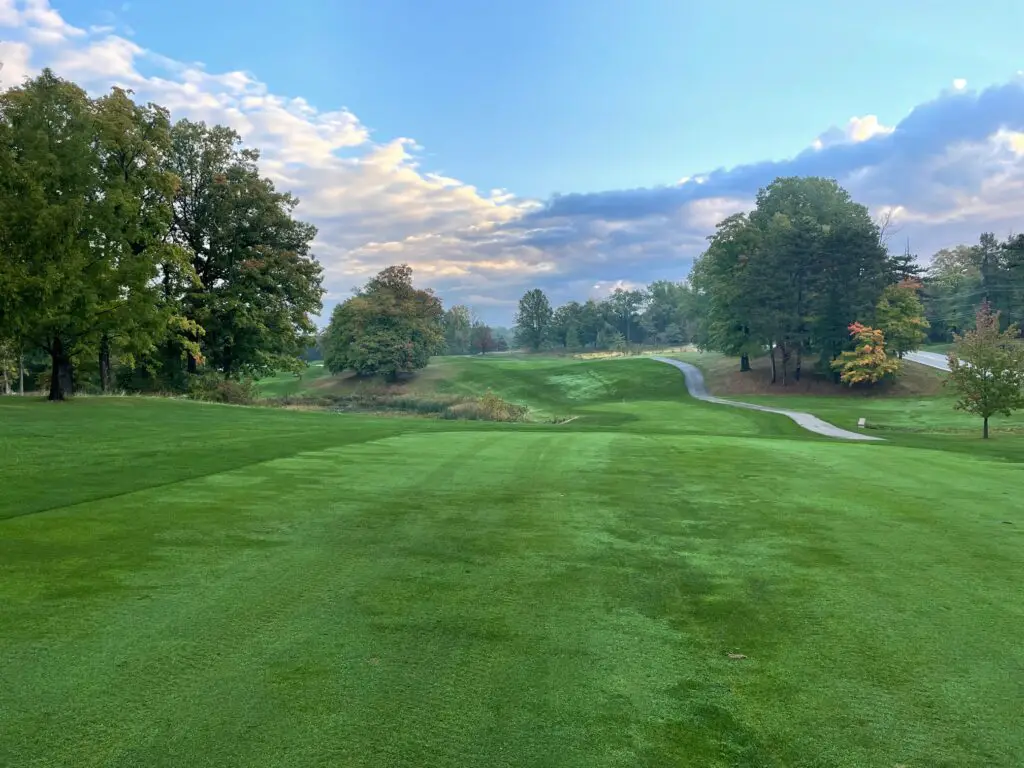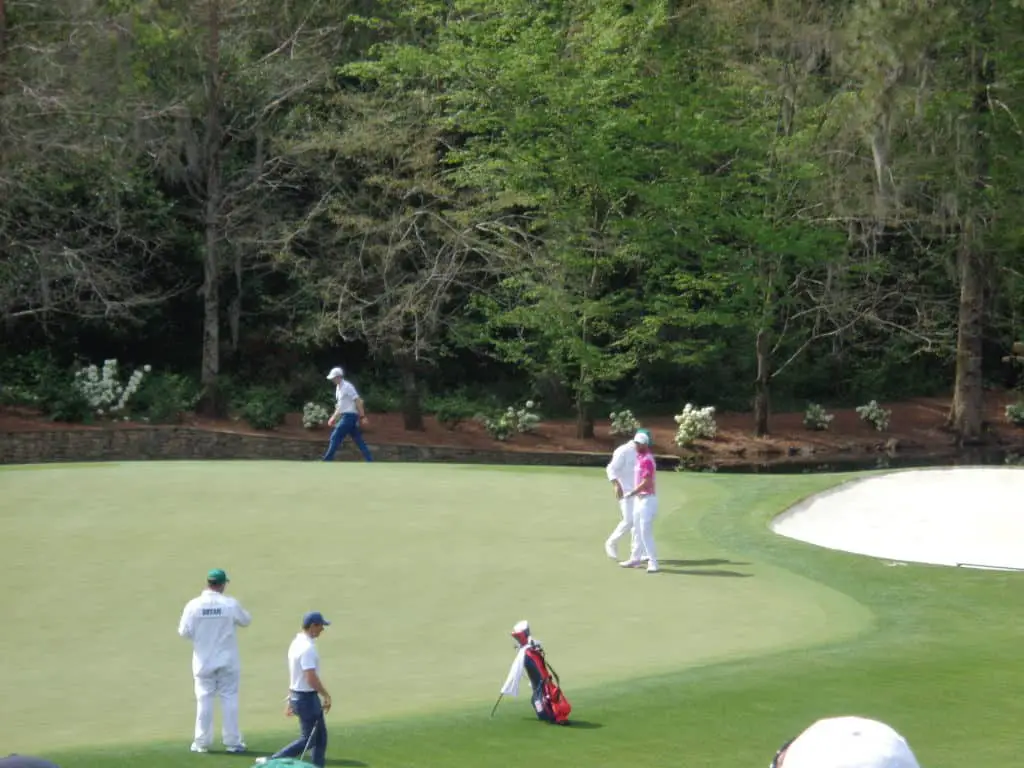A Tight Lie occurs in golf when there is very little grass between the ground and the golfer’s ball. This most frequently happens on very nice fairways or where there is no grass.
Over the years, the length of fairways continues to get shorter and shorter. While the appearance can be amazing with the right grass seed, it can actually be more difficult on the golfer due to less margin for error.
When a ball is sitting really close to the ground, the golfer must be able to control his or her low point and be precise.
With some extra grass height between the ground on the ball, the golfer has a bigger margin for error and can get away with less precision.
As golf courses mow their fairways lower, the golfer must continue to make adjustments and be ready for these types of conditions.
The most frequent locations of tight lies in golf:
- Elite golf courses such as country clubs that mow their fairways really short.
- Golf courses that lack grass in areas and where hardpan is a common thing.
- Dried out golf courses, typically in summer months

Tight Lies in Golf
Golfers need to consider the following when it comes to tight lies in golf:
- How to Adjust To Tight Lies
- Drills To Prepare for Tight Lies
- Chipping from Tight Lies
- Consider your Equipment
Key Area #1: How To Adjust To Tight Lies
The golfer should consider the following adjustments to tight lies:
- Move the ball slightly back in your stance
- Stay stable throughout the swing.
- Use more body rotation and less firing of the hands.
- Control your low point.
- Maintain good tempo through the shot.
The two ideas above that most jump out are the body rotation and less firing of the hands. When a golfer starts firing their hands, their low point can get more inconsistent and lead to a steep angle of attack. When the ground if firm from hardpan, the golfer who is firing his or her hands that misses slightly behind the ball is going to pay a big price and have terrible contact.
Instead, stay stable and rotate back and through the shot and take a shallow angle into the ball. For years, I would often try to really hit down on the ball, but I think theis solution works great when you execute, but there is a smaller margin for error.
Two great golfers come to mind in these conditions. Tom Watson and Tiger Woods. I think of Tom Watson as a picker of the ball and Tiger Woods often practices not taking divots with his shots. They both have great records at the British Open where the ground is often firm with very little grass.
They have great clubface control and can control their low point, heading to quality contact and precision with their distances!

Key Area #2: Drills To Prepare for Tight Lies
I would highly recommend two different shots or drills you can utilize to prepare for these situations and conditions on a golf course.
- Tiger Woods – Do not disturb the grass drill
- Low Point Control Drill
Low Point Control Drill
- At the driving range, set up an alignment stick about 6-8 yards in front of you, straight down your target line.
- If you have a second alignment stick, set the stick 3-4 feet right of the first stick (for a draw) or left of the first stick (for a fade).
- Complete your initial assessment see how many times out of 10 you can start the ball to the right or left of your target. Pick one side and measure your game at this point.
- The goal is to eventually get 7 out of 10 shots to start to the correct side and draw back towards the target.
Key Area #3: Chipping from Tight Lies
Have you ever felt a little nervous over a tight lies, 30 yard pitch shot? I know I have! And I know I have seen professionals struggle with this shot as well!
Another byproduct of golf courses keeping faster greens, short cut greens and fairways is that while it looks great, it can be difficult to perform, especially for the amatuer that doesn’t get to spend hours chipping from these difficult lies.
For many amateurs, chipping from the rough can be easier because of a greater margin for error.
Alternative chipping techniques (2 Options)
So what should the amateur golfer do?
#1 Use the bounce to create a larger margin for error. Too many golfers lead with the leading edge and stub the club into the ground, leading to disastrous shots. Use the bounce of the club and get through the shot.
#2 Keep moving. Keep your chest moving back and through the shot and allow the arms to ride along with quiet hands. This helps the golfer control the low point and ensure there isn’t a significant releasing of the club, which can also make things more difficult!
Chipping from a Tight Lie: Complete Post!

Key Area #4: Consider Your Equipment
Many golfers will struggle with their long irons from the tight lies. Instead, some golfers might reach the point where replacing the long irons with some hybrids might be beneficial. Hybrids are typically easier to hit from a tight fairway lie vs trying to hit the long iron. Give it a shot and see if it changes your game from these difficult tight lies!
Benefits of a hybrid club: Should I use one?
My Secret To Golf Improvement
Let’s face it, in order to get really good at golf, we must practice frequently. About five years ago, I made the leap and invested in a golf simulator build for my garage. I went with a SkyTrak Launch Monitor and the TGC software and can now play over 100,000 courses including Augusta, Pebble Beach, Bethpage Black, Whistling Straits. St. Andrews and many other of the top 100 courses in the world.
This golf simulator setup, which is more affordable that you might imagine, has been a game changer. I can now play golf everyday of the year regardless of rain, snow, cold weather or time of day. I can practice or play rounds of golf. I can stand in the 11th fairway at Augusta and with the auto-rewind feature I am able to practice my approach shots from various differences.
It is worth checking out through Rain or Shine Golf as they offer some incredible packages along with financing offers that are difficult to beat.
Some direct links to Rain or Shine Golf for pricing and financing:
